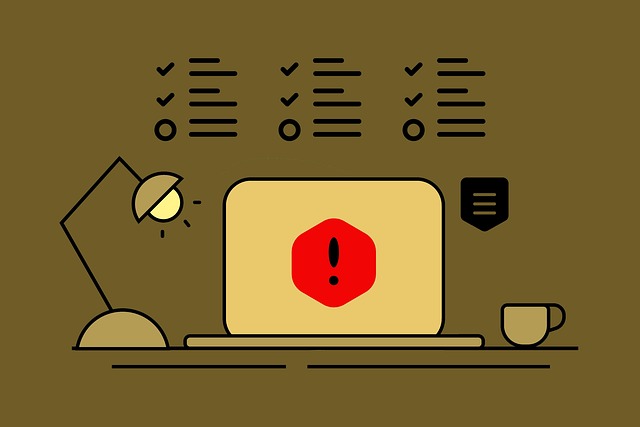Securing student housing involves prioritizing safety through understanding rights/responsibilities, inspecting rental security features, adopting personal safety practices, installing extra measures like alarms or smart locks, connecting with neighbors, and staying informed about building protocols. Following these student housing safety tips ensures off campus security, promotes safe student rentals, and establishes a secure living environment for students navigating unfamiliar spaces.
As students increasingly opt for off-campus rentals, ensuring their safety and security becomes paramount. This comprehensive guide offers essential tips for navigating the complexities of student housing safety. From understanding your responsibilities as a tenant to securing your space and building a safety net in unfamiliar environments, we equip you with strategies to protect yourself and your belongings at all times. Discover practical measures to make your off-campus rental a safe haven.
- Understanding Your Responsibilities: A Student's Guide to Off-Campus Housing Safety
- Securing Your Space: Essential Tips for Locking Down Your Student Apartment
- Building a Safety Net: Strategies for Staying Safe in Unfamiliar Environments
- Preventive Measures: Protecting Yourself and Your Belongings at All Times
Understanding Your Responsibilities: A Student's Guide to Off-Campus Housing Safety

As a student considering off-campus housing, it’s crucial to understand your responsibilities in ensuring your safety and securing a safe living environment. While landlords are required to maintain certain safety standards, students also play an active role in their own protection. Familiarize yourself with local emergency services and reporting procedures. Regularly assess the security features of your rental unit, such as working smoke and carbon monoxide detectors, well-lit entryways, and secure locks. Stay vigilant about keeping personal information and valuables safe, locking doors and windows when leaving, and being cautious during late-night walks or in poorly lit areas.
Additionally, consider implementing extra security measures specific to your living space, like installing a security system or smart locks with access codes. Building relationships with neighbors can also enhance off-campus security; they might notice suspicious activity or be willing to assist in an emergency. Proactive safety measures, combined with a heightened awareness of your surroundings, are key components of a student’s guide to off-campus housing safety, ensuring a secure and peaceful living experience.
Securing Your Space: Essential Tips for Locking Down Your Student Apartment

Securing your new student apartment is a crucial step in ensuring off-campus housing safety. Start by assessing the property’s security features. Look for a well-lit building with secure entry points, such as keycard access or intercom systems. Check if windows and doors are equipped with sturdy locks; consider installing additional security measures like deadbolts or alarm systems.
Create a safe space within your apartment by keeping doors locked at all times, even when you’re home. Use chain locks for added security on patio or balcony doors. Keep valuable items out of plain sight and in secure storage areas. Regularly review emergency exit routes and ensure they remain clear of obstacles. Familiarize yourself with the building’s security protocols and report any maintenance issues that could compromise safety immediately.
Building a Safety Net: Strategies for Staying Safe in Unfamiliar Environments

Moving into an off-campus rental can be exciting for students, offering independence and a sense of freedom. However, it’s crucial to prioritize student housing safety to navigate unfamiliar environments securely. Building a robust safety net involves proactive measures and being prepared for potential risks. Students should start by thoroughly researching the area, understanding local laws, and learning about nearby emergency services. Installing reliable security systems, such as door and window locks, cameras, or alarms, is an essential step in securing student apartments. Additionally, establishing communication channels with neighbors and local community groups can provide valuable support and quick response times during emergencies.
Creating a safety routine is another effective strategy. Students should familiarize themselves with evacuation plans, meet their neighbors, and keep emergency contact details readily available. Regularly updating important documents, such as insurance policies and identification, ensures that students are prepared for any unforeseen circumstances. By implementing these housing security tips, students can transform their off-campus living experience into a safe and secure one, fostering a sense of wellbeing in an unfamiliar setting.
Preventive Measures: Protecting Yourself and Your Belongings at All Times

When it comes to off-campus student housing safety, prevention is key. Students should always be vigilant and take proactive measures to protect themselves and their belongings. Regularly securing doors and windows with locks is a fundamental practice, ensuring no unauthorized access. Additionally, implementing simple yet effective security routines, such as keeping valuable items out of sight and avoiding leaving keys in visible places, significantly reduces the risk of theft or burglary.
A comprehensive student safety guide should also encourage reporting any suspicious activities to landlords or local authorities promptly. Staying informed about neighborhood watch programs or community-based security initiatives can further enhance off-campus security. By combining these preventive measures with awareness and quick response, students can ensure a safer living environment in their chosen housing arrangements.
